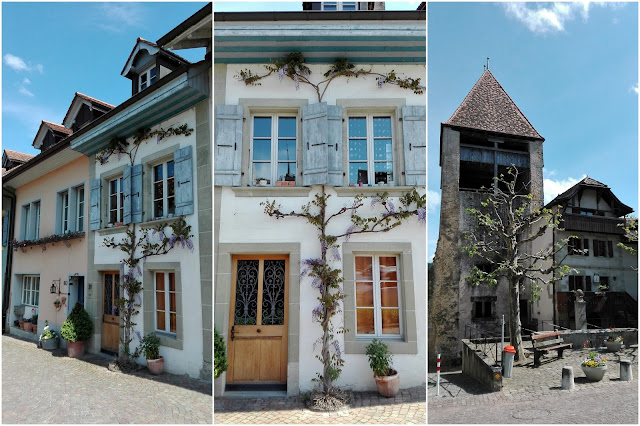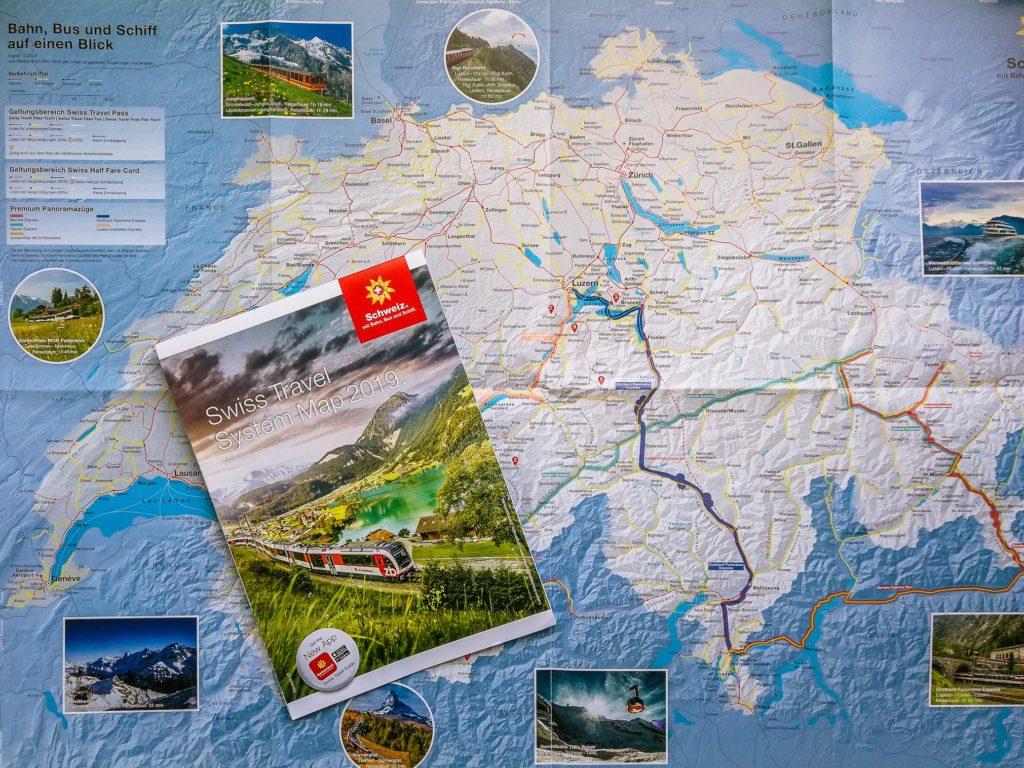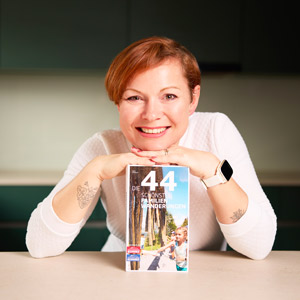Ti z vás, kdo mě znají, ví, že
nekriticky zbožňuju mám ráda knížky od
Lindsey Davisové, které jsou zasazeny do antického Říma a některých dalších římských provincií. Proto jsem nadšená, že mimo
Augusty Rauricy, kterou jsme navštívili vloni, má Švýcarsko ještě jedno místo s odkazem ke starověkému Římu. Tím je městečko Avenches (dříve v latině Aventicum), které se nachází cca 40km západně od Bernu.
Those of you who know me are surely aware of the fact that I uncritically adore like Lindsey Davis and her historical crime novels, that are set in ancient Rome and its empire. Therefore I am really happy that besides Augusta Raurica, which we visited last year, Switzerland has another place with reference to ancient Rome. This is the town of Avenches (Aventicum in Latin), which is located about 40 km west of Bern.
Na úvod trocha historie:
 |
| Římské muzeum/Roman museum |
Aventicum bylo postaveno jako hlavní město keltského kmene Helvetiů (Helvétů) a dostalo jméno podle keltské bohyně vod jménem Aventia. V prvním století před Kristem bylo připojeno k Římské říši v rámci provincie Gallia Belgica. Roku 72 n.l. mu císař Vespasián zaručil postavení kolonie* a Aventicum se stalo velmi významným střediskem s téměř 20 tisíci obyvateli (což je asi 5x více než ná Avenches dnes). Ve třetím století našeho letopočtu však nebylo schopno odolat útokům kmene Alemanů, Řím nedokázal dobýt své území zpátky a vhledem k zániků Římské říše v pátém století, mělo i Aventicum všechny své slavné chvíle za sebou. Oblast zůstala osídlená i po římské éře a v roce 1074 bylo na kopci, nedaleko původního římského města, založeno město nové, které začalo ve středověku znova vzkvétat.*)
A bit of history to begin with:
Aventicum was built as the capital of the Celtic tribe of the Helvetii (Helvet) and was named after Aventia – the Celtic goddess of waters. In the first century before Christ Aventicum was attached to the Roman Empire within the province of Gallia Belgica. In 72AD, The emperor Vespasian guaranteed the status of colonia* and Aventicum became a very important center with nearly 20,000 inhabitants (which is about 5 times more than Avenches has today). In the third century Aventicum was unable to withstand the attacks of the Aleman tribes, Rome failed to conquer their territory back and together with the demise of the Roman Empire in the 5th century, Aventicum left all its glorious moments behind. The area remained populated after the Roman era and in 1074 a new city was founded up the hill, close to the former roman town and it began to flourish again in the Middle Ages.*)
 |
| Římské památky jsou volně přístupné |
 |
| Roman ruins are free to access |
Ale zpátky k naší návštěvě:
Hlavní turistické atrakce v Avenches jsou nepochybně římské muzeum a amfiteátr, který je stále využíván pro koncerty a festivaly. Ale Avenches nejsou jen římské památky. Další dominantou je středověký hrad, který byl postaven ve 13. století. Sice jsem tam nikdy nebyla, ale tak nějak si představuju renesanční zámky na Loiře, o kterých jsme se učili v hodinách francouzštiny.
But back to our visit:
The top tourist attractions in Avenches are undoubtedly the Roman Museum and amphitheater. The amphitheater is still in frequent use for concerts and festivals. But Avenches are not only roman ruins. Another interesting sight is a medieval castle built in 13th century. Although I’ve never been there, I suppose renaissance castles on the Loire river, that we learned in the French lessons about, look like this.
Stejně jako třeba Bern nebo Murten má i Avenches tři rovnoběžné ulice, které tvoří historické centrum města. Určitě se vyplatí projít všechny, protože člověk tady narazí na velmi malebné domky se zajímavými fasádami a barevnými okenicemi.
Just like Bern or Murten, Avenches has also three parallel streets that form the historic city center. It is good to go through all of them because there one can see very picturesque houses with interesting facades (coloured window shutters included).

Přibližně ve středu hlavní ulice stojí kostel Máří Magdaleny z 11.století. Na přilehlém náměstíčku se nachází také radnice, informační centrum nebo hotel Couronne (prý velmi luxusní, ale to jsme neměli šanci vyzkoušet). Jinak je hlavní ulice lemována obchůdky, kavárnami a restauracemi se zahrádkami, které lákají k příjemnému posezení v tomto malebném městečku.
In the middle of the main street you can find the Mary Magdalene church from the 11th century,. On the adjacent square is also the town hall, information center or hotel Couronne (it is said to be very luxurious, but we did not have a chance to try). Otherwise, the main street is lined with shops, cafés and restaurants with gardens that invite visitors to order coffee and enjoy the sunny day in this picturesque town.

Překvapilo nás, že i přes to, že byl den volna a krásné počasí, městečko a jeho historické památky nebyly v obležení turistů. A to bylo také velké plus.
We were really surprised that despite the fact that it was a day off (in addition with beautiful weather), the town and its historical monuments were not besieged by tourists. And that was another plus 🙂
A co jsem měla na našem výletu na sobě? I když trochu foukalo, riskla jsem to a obula baleríny naboso. K tomu korálově červené chinos (opravdu nejsou ve skutečnosti tak růžové, jako na fotce). A nahoru novou mikinu, kterou bych nejradši nosila pořád.
And what I wore during our trip? Despite a little windy weather, I took a risk and was barefooted in my leopard ballerinas. The coral-coloured chinos are actually not as rosy as in the picture and if it were possible, I’d wear my new sweatshirt all the time .
*Malá historická odbočka pro ty, co by rádi věděli, co to byly původně kolonie: ve starověkém Římě se tak nazývaly posádky pro legionáře, bývalé vojáky, kteří po odchodu z vojenské služby měli nárok na půdu a stali se občany. To mělo zvýšit územní rozvoj a stabilitu a navíc zajistit rozšíření římské kultury.
Small historical detour for those of you, who would like to know what colonias originally were: in ancient Rome a colonia was a town that was a specific residential location for legionaires who upon retirement were granted land and became citizens. This encourage land development and stability and not least the extension of Roman „culture“.
(https://en.wikipedia.org/wiki/Aventicum)
Pokud nechcete přijít o nejnovější příspěvky na mém blogu, staňte se jeho pravidelným čtenářem a zaregistrujte se v pravém horním rohu této stránky. Děkuji 🙂
If you don´t want to miss any of my recent posts please sign up for my blog in the top right hand corner of this page. Thank you 🙂
Budu ráda, kdykoli budete chtít sdílet moje příspěvky na Facebooku nebo Twitteru. Pomůže mi to dostat můj blog k dalším lidem, kterým by se také mohl líbit.
A samozřejmě se těším na všechny vaše komentáře!
I will appreciate any time if you share my posts on Facebook or Twitter. It helps get my blog out to more people, who may like my posts.
And of course I look forward to reading all you comments.
*) zdroj:
https://en.wikipedia.org/wiki/Avenches
Turistický průvodce Švýcarsko – JOTA, 2011 (přeloženo z Teller, M: „The Rough Guide to Switzerland“, Rough Guide 2010)




























Žádné komentáře
The pictures are gorgeous. And I LOVE your pants. You look striking! Thanks for participating in my very first link-up!
Thank you so much! And it was my pleasure 😉